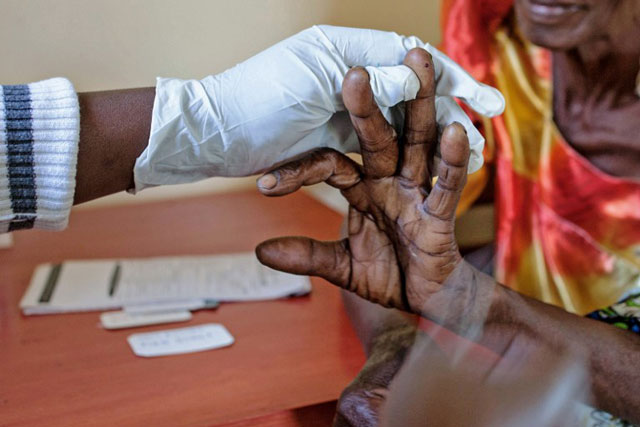
Kampala, Uganda | THE INDEPENDENT | A new study has found that the readily available Rapid Diagnostic Tests (RDT) used in testing for malaria are missing some positives especially those that have low levels of the disease and those that are asymptomatic.
The observational study whose results were released this morning started in 2019 by the Ministry of Health. It was evaluating the efficacy of two methods of testing where they used the common RDTs on one arm and used the High Sensitive Abbot tests also known as HS-RDTs on the other.
With the HS-RDTs, they connected a smartphone app which helped them to automatically virtually send the test result together with the patient’s details and location to the Uganda National Health Laboratory Services server for analysis.
The researchers found, for patients who sought care in the outpatient department, the malaria parasite positivity rate was 13.3 percent for HS-RDTs, more than double that of 6.4 percent with the common RDTs on the same patients who were largely children and adolescents aged 5-17 years.
They also tested 3,490 women who were seeking antenatal care for the disease and found that 384 at 11 percent had malaria despite being given malaria treatments as prevention and yet some reported using mosquito nets. In this category too, when tested using the two methods, 10.4 percent tested positive using HS-RDT and 7 percent when using the common RDTs.
When it came to random community testing where they picked 3,009 children below five in high malarial districts, 79.7 percent (2,397) of them tested positive something that tickled the researchers to do further tests on people that the positives live with. A total of 8,888 asymptomatic people were then tested with HS-RDTs coming out with 21.1 percent positives at 1,877.
Speaking at the launch of these findings on Wednesday, the Health Ministry Permanent Secretary, Dr Diana Atwine said they are now planning to start using the high sensitivity technology to follow up cases even those without symptoms in the community.
Atwine said the findings are an eye-opener for them to enroll even the asymptomatic on early treatment and avoid the possibility of re-infection which causes endless expenditure on care for individuals in the same household.
However, the study was conducted in the 65 districts affected by the recent upsurge of the disease in the regions of West Nile, Acholi, Lango, Busoga, Bunyoro, Buganda, Karamoja, Teso, Eastern and Western Uganda. In terms of statistics, malaria cases rose from about a million in June 2018 to 1.4 million in June 2019.
Among the strategies of reversing these figures, Dr Atwine says they plan to involve community health workers more for surveillance and having suspects tested early and enrolled on treatment.
To be able to accurately diagnose cases, she says under the study they were able to train health workers to assess whether they can use the HS-RDT test effectively and most of them had no major issues with using the mobile app and the tests.
******
URN
 The Independent Uganda: You get the Truth we Pay the Price
The Independent Uganda: You get the Truth we Pay the Price


